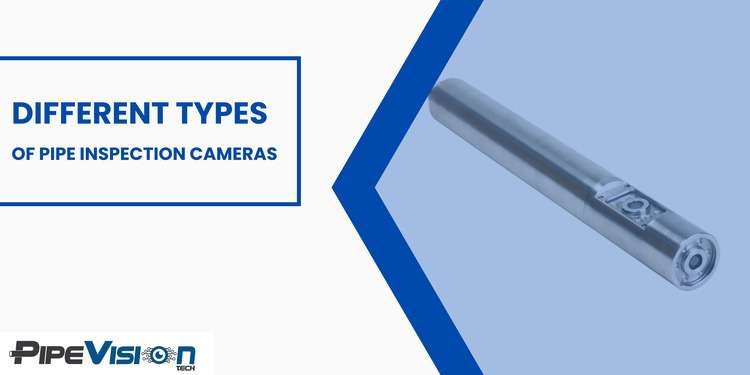The world of
pipe inspection cameras is diverse, offering a variety of tools designed for specific applications and scenarios. Let’s explore the different types of pipe inspection cameras, from crawler cameras navigating intricate pipes to handheld portable options providing flexibility in inspections.
Crawler Cameras
Crawler cameras are robust and versatile, designed to traverse through pipes of various sizes. Equipped with wheels or tracks, they can navigate bends and turns, providing a comprehensive view of the pipe’s interior.
Fixed Zoom Cameras
Fixed zoom cameras offer a focused view at a specific magnification level. These cameras are ideal for detailed inspections where a closer look is necessary for accurate assessments.
Push Rod Cameras
Compact and maneuverable, push rod cameras are pushed through pipes manually, providing flexibility in navigating tight spaces. They are excellent for inspecting smaller-diameter pipes.
Inspection Rafts
Floating on water, inspection rafts are designed for sewer and stormwater inspections. They offer a unique perspective, allowing for assessments in submerged environments.
Drone Cameras
Drones equipped with specialized cameras provide an aerial view for pipe inspections. Ideal for large-scale and outdoor applications, drone cameras offer a swift and efficient way to survey extensive pipe networks.
Manhole/Maintenance Hole Cameras
Specifically designed for inspecting manholes and maintenance holes, these cameras are equipped to handle the challenges of confined spaces, providing a detailed view of underground structures.
Jetter Nozzle Cameras
Integrated with jetter nozzles, these cameras can simultaneously inspect and clean pipes. Ideal for applications where debris removal is necessary during the inspection process.
Hand-Held Portable Cameras
Compact and easy to handle, handheld portable cameras are versatile tools for quick inspections. They are suitable for smaller pipes and offer convenience in on-the-go assessments.
Pushcam Pipe Inspection
Similar to push rod cameras, pushcam pipe inspection tools offer a straightforward, manual approach to inspecting pipes. They are efficient for quick assessments inaccessible pipelines.
Lateral Launch Cameras
Lateral launch cameras are designed to inspect lateral connections in mainline pipes. They provide a comprehensive view of branching pipes, aiding in the identification of potential issues.
Reel Inspection Cameras
Mounted on reels, these cameras offer flexibility in maneuvering through pipes. They are suitable for a range of pipe diameters and provide a clear view of the interior.
In conclusion
The realm of pipe inspection cameras is vast, offering a diverse array of tools to meet the unique demands of various applications. From the robust crawlers conquering intricate pipelines to handheld portables providing flexibility on the go, each type of camera serves a specific purpose in unraveling the mysteries within pipes.
These tools not only provide a lens into the underground but redefine how we approach the maintenance and assessment of intricate pipe networks.
For those seeking precision, flexibility, and reliability, PipeVision stands as a beacon in this ever-evolving landscape. Our inspection cameras are crafted to meet the challenges head-on, offering cutting-edge technology for a clearer, more detailed view of what lies beneath.
Explore PipeVision’s Inspection Cameras
Discover PipeVision’s different types of pipe inspection cameras, each crafted to meet specific needs. From crawler cameras for intricate pipe systems to handheld portable options, our products are designed for precision and reliability.
Ready to explore the future of pipe inspections? Dive into PipeVision’s innovative inspection cameras—[Explore PipeVision Now].
FAQs
1. Which type of camera is best for inspecting large pipes?
Crawler cameras are well-suited for inspecting large pipes, providing the necessary robustness and versatility to navigate expansive sewer systems.
2. Are drone cameras suitable for indoor inspections?
Drone cameras are primarily designed for outdoor and large-scale inspections. For indoor applications, consider more compact options like push rods or handheld portable cameras.
3. What is the advantage of using jetter nozzle cameras?
Jetter nozzle cameras combine inspection and cleaning capabilities in one tool, making them efficient for maintaining pipes during the inspection process.
4. Can pushcam pipe inspection tools navigate tight spaces?
Yes, pushcam pipe inspection tools are designed for maneuverability in tight spaces, making them suitable for quick assessments in areas with limited accessibility.
5. Which type of camera is ideal for inspecting lateral connections?
Lateral launch cameras are specifically designed for inspecting lateral connections in mainline pipes, providing a detailed view of branching pipes for accurate assessments.


